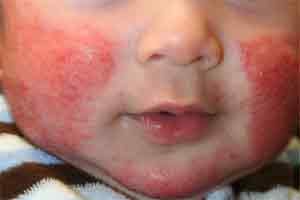American Academy of Dermatology Issues New Guidelines of Care for the Diagnosis of Atopic Dermatitis
 The American Academy of Dermatology (Academy) has released new evidence-based guidelines for the diagnosis and assessment of atopic dermatitis based on an extensive review of the scientific literature on this chronic skin condition characterized by itchy red patches of skin.
The American Academy of Dermatology (Academy) has released new evidence-based guidelines for the diagnosis and assessment of atopic dermatitis based on an extensive review of the scientific literature on this chronic skin condition characterized by itchy red patches of skin.
Published online in the Journal of the American Academy of Dermatology, the Academy’s first of four sections in the guidelines of care for atopic dermatitis focuses on methods for diagnosing and monitoring the disease. The guidelines also discuss measurements for disease severity and quality of life as well as associated conditions that commonly affect patients with atopic dermatitis.
According to current estimates, up to 25 percent of children and 2 to 3 percent of adults have atopic dermatitis. Studies show that the onset of atopic dermatitis is most common between three and six months of age.
“This is the first guideline issued by the Academy that covers the diagnosis of a condition,” said dermatologist Dirk M. Elston, MD, FAAD, president of the Academy. “Misdiagnosis of atopic dermatitis is a concern, especially for adults, and can contribute to making the disease worse. These guidelines provide criteria for accurately diagnosing atopic dermatitis that differentiate it from other conditions with similar characteristics.”
Based on a comprehensive review of available data for diagnosing and managing atopic dermatitis, the first section of the Academy’s guidelines include three key recommendations:
• Monitoring of patients’ immunoglobulin E levels is not recommended because they do not correlate with disease severity.
• Physicians should ask their patients general questions about itch, sleep, impact on daily activity, and persistence of the disease.
• Dermatologists should coordinate with other specialties when providing care for atopic dermatitis patients who have associated conditions that affect more than the skin, such as sleep issues, asthma, food allergies, ADHD, and other psychological conditions.
“The itch associated with atopic dermatitis is one of the most problematic symptoms of this skin condition and can significantly impact a patient’s quality of life,” said Dr. Elston. “Children with persistent itching may experience sleep disruptions and problems focusing in school, which is why proper diagnosis and treatment is so important.”
These guidelines were developed by a work group of recognized atopic dermatitis experts. The remaining three sections, which will be published in 2014, will focus on the management and treatment of atopic dermatitis with topical therapies, systemic agents, adjunctive therapies, and the prevention of flares.
The Academy’s guidelines of care for the management of atopic dermatitis can be accessed on the Academy’s website.

